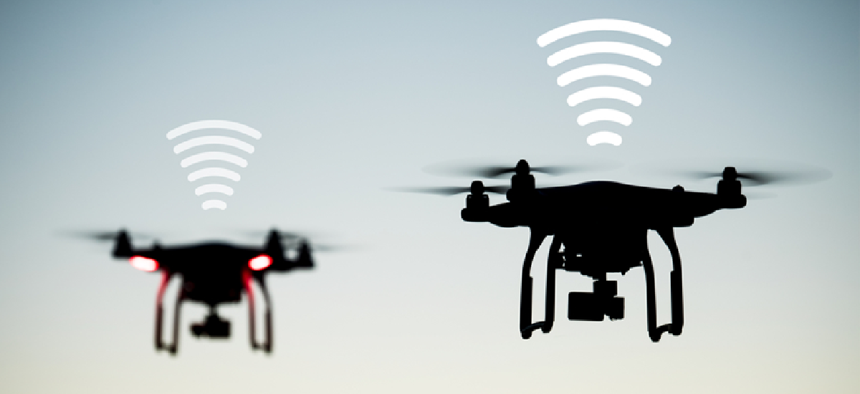Is Bluetooth the answer to remote drone ID?


Connecting state and local government leaders
The technology used to connect cell phones to wireless earbuds could used by law enforcement to identify and track drones.
Officials may soon be able to identify and track drones with Bluetooth.
Early versions of the technology connected over very short distances -- earbuds to smartphones, for example. But according to Anil Nanduri, the VP and general manager for the drone group at Intel, more recent iterations, from Bluetooth 4.0 and up, can broadcast up to a kilometer or more. The company is participating in development of the Open Drone ID standard that enables drones to be identified when within range of a receiver, like a smartphone.
This ability to make long-range connections combined with its low price mean Bluetooth could be an ideal solution for identifying remote drones, essentially creating "a virtual license plate,” Nanduri said.
This license plate would contain a unique ID for the drone, its location, direction, altitude, speed, make and model, as well as where the remote control is located. That information could be used by law enforcement to determine if flights are authorized to be where they are and if they’re operating safely.
In a test flight along with the Choctaw Nation in Oklahoma, Intel recently demonstrated using Open Drone ID as part of the Department of Transportation’s Drone Integration Pilot Program.
The test flight of an Intel Falcon 8+ drone equipped with a thermal sensor flew at night over livestock to see if this technology would be a viable option for finding lost cattle. One the ground, a smartphone running a remote drone ID app received information from the drone like its location and speed.
There are several options for transmitting information from drones. Every device could have its own SIM card, or data could be sent over a wireless connection or with a transmitter and transponder. But most smartphones already have Bluetooth and many drones have it, too, Nanduri said.
Any smartphone or tablet with the right authorization and software would be able receive drone tracking data, meaning officials wouldn’t have to carry around specialized hardware just for the purpose of remote ID, Nanduri said.
The Open Drone ID project is managed through a workgroup within ASTM, an international standards organization. Intel is leading the ASTM F38 Remote ID Standard and Tracking Workgroup.




